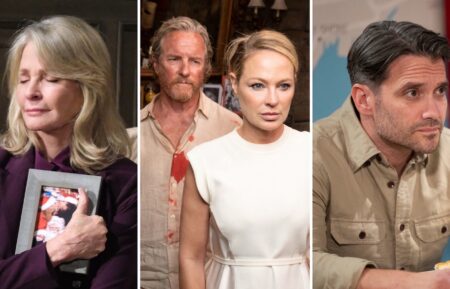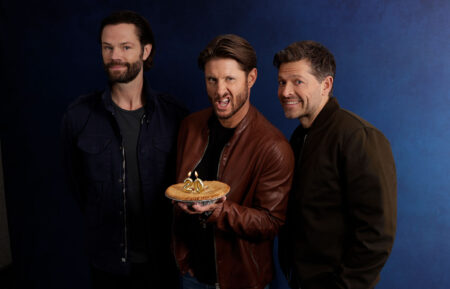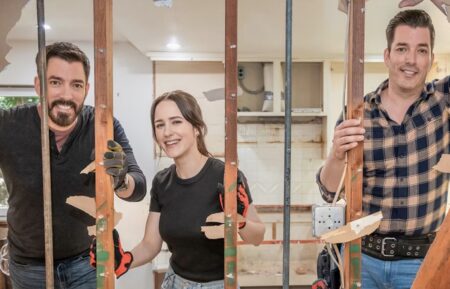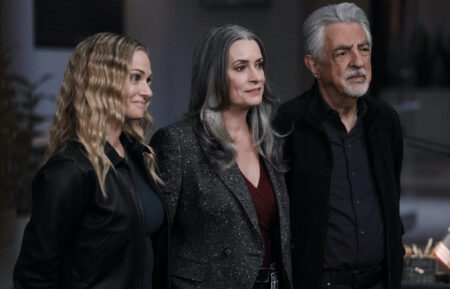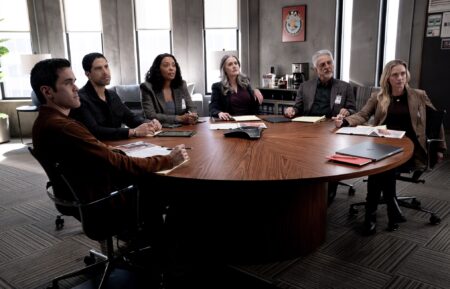House of Mouse: PBS’s ‘American Experience’ Profiles Walt Disney
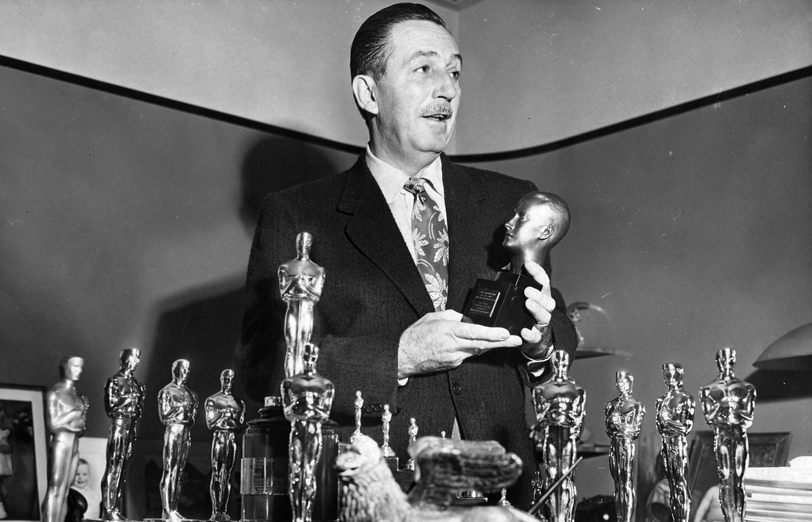
The acclaimed PBS bio series American Experience usually devotes two hours to its esteemed subjects, but Walt Disney (airing Monday and Tuesday, Sept. 14-15, 9/8c; check local listings at pbs.org) clocks in at four hours. And that still won’t be enough to satisfy millions upon millions of diehard Disney fans. But it’s fabulous, nonetheless. Directed and produced by Sarah Colt, the film tracks the great American storyteller from his early days as a commercial artist in Kansas City (his first animation studio, Laugh-O-Grams, went bankrupt) to his groundbreaking success in 1937 with Snow White and the Seven Dwarfs, and onward as he conquered television, created Disneyland and capped his career with the beloved Mary Poppins. We sat down with two of the film’s key participants, Oscar-winning composer Richard Sherman (Mary Poppins, The Jungle Book) and executive producer Don Hahn (Beauty and the Beast, The Lion King), to get their take on the wonderful world of Disney.
One of the most remarkable aspects of this documentary is how Disney overcame so many massive setbacks. When he realized he’d made a bad business deal and did not have creative control over his first big cartoon character, Oswald the Rabbit, he retaliated by creating Mickey Mouse. When his animators went on strike against him in the 1940s, he turned his focus to theme parks and TV, where he found even greater success. Why was bad news such a source of inspiration for him?
Hahn: That strike killed him. Walt built a great studio and made five back-to-back classics–Snow White, Pinocchio, Fantasia, Dumbo and Bambi—and so many important people on his team deserted him. It was a devastating event for him, the kind that would have stopped most other people. Not him. We tend to think of Walt Disney’s story as one of magic and fantasy—and it most certainly was—but it’s even more about survival. He went through so many terrible things, including a mental breakdown when he was 30 years old because he was working too hard, but the greatest of his many gifts was persistence and his inability to admit defeat. He did not take “no” for an answer. He always came back swinging.
Sherman: Walt had a marvelous talent for taking his heartbreak and pain and channeling it into something wonderful. He was all about joy, happiness, fulfillment. But I think he was so positive because he was fighting the negativity within himself. I didn’t think about it when I was working with him back in the 1960s—I was so busy writing songs for him—but looking back now I can see that he was fighting his own demons. But that’s what made him so special, so marvelous. The strike devastated him because he loved everybody and he thought everybody loved him. He was hurt so many times, like by the guy who stole Oswald the Rabbit from him. He was a very sensitive human being and eventually became afraid that people would leave him. I never would have left him! He was one of a kind, and so visionary.
Hahn: He was also saved by his intense and unending curiosity. When he got tired of animation, he went on to make nature movies, and live-action features, and then there was the greatest opportunity of all—television. He always wanted and needed a new chapter, and he was a bulldog about it, forcing his way into new territory that others never even imagined entering. He was always finding new ways of expressing himself. In a good way, I think he probably suffered from attention deficit disorder. Walt was always a kid, even when he was in his sixties, and it was genuine. There was no cynicism in Walt Disney. He had a great willingness to be corny. He loved corn! He was always sincere in his storytelling. He was never a part of Hollywood—even geographically. His studio was way over the hill in Burbank, removed from most of the other studios. Intellectually and otherwise, he was a different breed.
Yet he craved acceptance from the Hollywood establishment. Disney won more Oscars than anyone, and still holds that record, yet he was obsessed with getting the big nomination—Best Picture—and he was really pissed when it didn’t happen for Snow White.
Hahn: When Beauty and the Beast became the first animated film nominated for Best Picture, we were high-fiving each other all over the place, not just for us but for Walt. You can see in the famous footage of Shirley Temple presenting him with his honorary Oscar for Snow White that he’s not happy. Even today, I’m not sure the Academy really understands that animation is not a genre unto itself but, rather, a storytelling technique. Walt could never convince Hollywood of that. It was one of the few battles he couldn’t win.
Sherman: Walt put everything he had into Mary Poppins, and it became his first live-action film to be nominated for Best Picture, though it did have a lot of animation in it. It got 13 nominations and won five! To make that happen, he knew he had to tug at our hearts. I challenge anyone to find any emotional element in the original Mary Poppins books. They’re intellectual. They have a lot of great thoughts. But they don’t hit you in the heart. It was Walt who made than happen.
Yet he wasn’t very mushy in real life. In fact, he was pretty damn stingy with his praise. What was that about?
Sherman: His biggest praise to anybody at the studio was, “That’ll work.” But the greater praise was in his actions, his eyes, his gestures. He didn’t want anyone getting stuck on themselves, thinking, “Wow! I’m good!” He kept you on your toes that way. But we never took it personally. We knew that he loved us and the work we were doing. [Laughs] Besides, behind your back, he’d praise you like crazy! You’d hear from all sorts of people at the studio that he was raving about your work. “This is going to be one of the greatest songs ever!” He didn’t want anyone getting overconfident. It was his way. He didn’t like people who were self-involved. He liked people who were team players. You never spoke in terms of “my idea.” It was always “our idea.” But the same went for him. Walt didn’t want us to think that we worked for him. He wanted us all to feel that we worked with him.
If Disney was still with us, what do you think he’d say about his successors buying up Pixar and Marvel and Star Wars and Muppets and putting them all under the Disney banner?
Hahn: I can only guess—I never had the honor of meeting the man—but I believe he would approve. [Chairman and CEO] Bob Iger and the board have brought in a terrific group of people who were cut from the same cloth as Disney, whether it’s John Lasseter or George Lucas or J.J. Abrams. They were all weaned on Disney and they revere him. This doesn’t change the Disney aesthetic. It honors and expands it. At one point, there was a danger of the Disney Studio turning into a museum. “Walt is gone. We must celebrate him. We must keep everything the same.” Well, the last person who would want that was Walt Disney, himself . He was very much a “that was then, this is now” kind of leader. He would want the best filmmakers in the world working for him! He was all about the future and its possibilities. When Walt died, he was planning EPCOT. He was tackling urban planning, public transportation and trash removal. He was that incredible combination of being eternally optimistic and completely fearless. The American Experience documentary humanizes all that. Some will greet this film with awe and amazement, some will be suspicious of it. Walt wasn’t a god. He was a man of flesh and blood and now you can walk in his shoes for four hours and see what it was like to be him. It’s really pretty fantastic.
Here’s an exclusive clip from Walt Disney:
[jwplatform vJvBWIj5]




